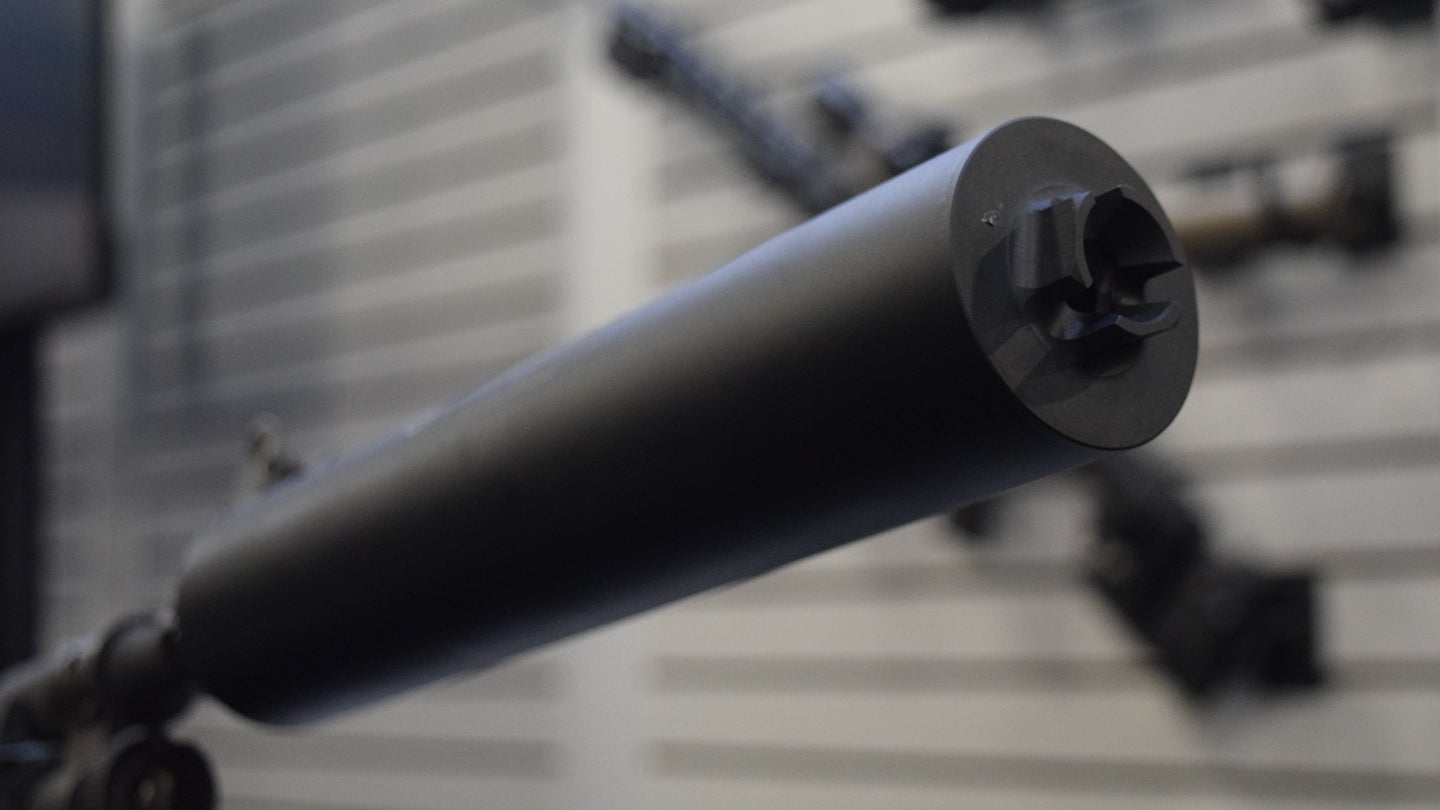This might be the Army’s next M240 suppressor of choice
“It’s a total game-changer for battlefield communications.”

Editor’s note: the Task & Purpose gear team is reporting from SHOT Show 2022 in Las Vegas, Nevada. Follow us on Facebook, Instagram, or Twitter or send us an email at thegearlocker@taskandpupose.com with what you want to see.
The Army wants soldiers to fire M240 machine guns toward enemy positions without making so much of a racket.
The service last week published a sources sought notice asking the U.S. defense industrial base for feedback on potential suppressors to reduce the sound and flash signature of its 7.62mm M240B and M240L machine guns.
“Presently, the M240B and M240L machine guns are unsuppressed weapons that utilize a flash hider for signature reduction,” the Army wrote. “It is desired to further reduce sound, flash, ground disturbance, while not significantly increasing the thermal signature.”
Sometimes referred to as a silencer, a suppressor moderates the intensity of a weapon’s muzzle blast, drastically reducing (although not completely eliminating) the sound signature, flash, and recoil produced by a gunshot.
Any proposed M240 suppressor for the Army must yield “a less than a 50% reduction in sound, flash, toxic fume and disturbed earth performance,” according to the sources sought notice, as well as “have the ability to demonstrate a minimum service life of 10,000 rounds, with a desired service life of 25,000 rounds.”
“The suppressor should be able to survive 50 to 125 of the 200 round belt standard duty cycles, in order to achieve the service life to 10,000 to 25,000 rounds,” according to the notice. “The suppressor should weigh between 16 to 56 ounces at zero rounds and should not extend past the end of the muzzle more than 4-10 inches.”

The Army isn’t alone in experimenting with suppressed machine guns. During the 2020 SHOT Show, gunmaker Radical Firearms unveiled an M240 suppressor that was reportedly selected for evaluation by the Joint Special Operations Command. And in 2017, the Marine Corps’ experimental “Uber Squad” was outfitted with suppressors for every weapon from individual grunts’ M4 carbines up to the vaunted .50 cal M2 machine gun, including the M240. Nowadays, tens of thousands of Marine infantrymen are sporting suppressors on their M4s and M27 Infantry Automatic Weapons.
More recently, Army officials with the Maneuver Battle Lab in Fort Benning, Georgia, conducted live-fire testing of an M240 suppressor from Maxim Defense called the MSX-240 in late 2020. As Army officials told Military.com following the experiment, other suppressors in past tests “have not been able to stand up to the heat and roar produced by the 7.62 mm M240” compared to the MSX.
The MSX, which weighs 63 ounces and adds exactly 10 inches to the muzzle of the M240, has a measured sound reduction of 136 decibels, which is “quiet enough for two people to have a full conversation without raising our voices about one meter from the gun,” said Maxim Defense’s Travis Bundy at SHOT Show 2022. “It’s a total game-changer for battlefield communications.”

While Maxim officials told Task & Purpose that the MSX was still in testing and evaluation with officials at the Fort Benning Maneuver Center for Excellence, the Army was tight-lipped about its timeline for potentially adopting a specific model for its arsenal now that the sources sought notice is officially in circulation with the defense industrial base.
“There is no definitive plan for procurement and fielding,” said Peter Rowland, an Army spokesman, adding that “we currently don’t have any data on the Maxim suppressor experiments.”
Still, if the 2020 tests were any indication, the MSX appears a shoo-in for whatever adoption and fielding the Army has planned in the long term.
“Suppressors have always had liability in the past,” Ed Davis, director of the Battle Lab, told MIlitary.com in 2020. “This is the first year that I would say most of the Maneuver Center [of Excellence] has gotten excited about a suppressor.”
What’s hot on Task & Purpose
- A judge ordered a man convicted of sexual assault to join the military or go to jail
- An Army spouse used a $30 device to track down a shady moving truck driver
- The Navy is still looking for the best use of its ‘little crappy ships’
- Here’s why the Marine Corps must do more to keep its best female Marines in uniform
- These soldiers cleared a path through 145 unexploded artillery rounds so senior officials could visit a building
Want to write for Task & Purpose? Click here. Or check out the latest stories on our homepage.
